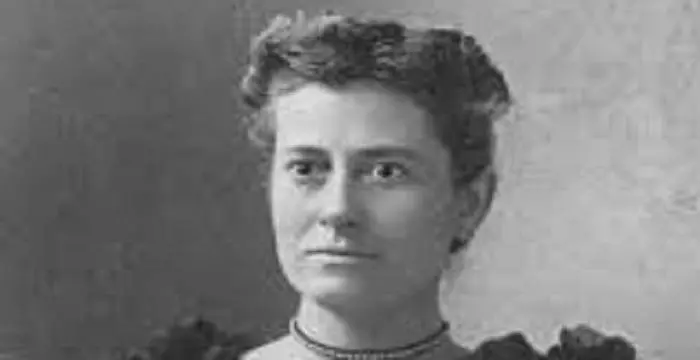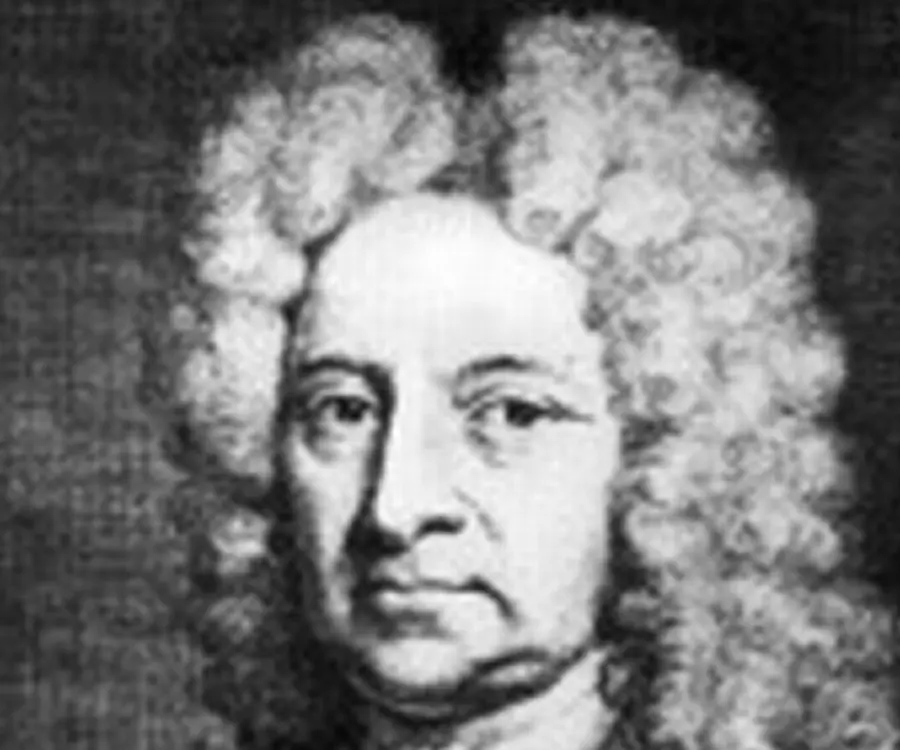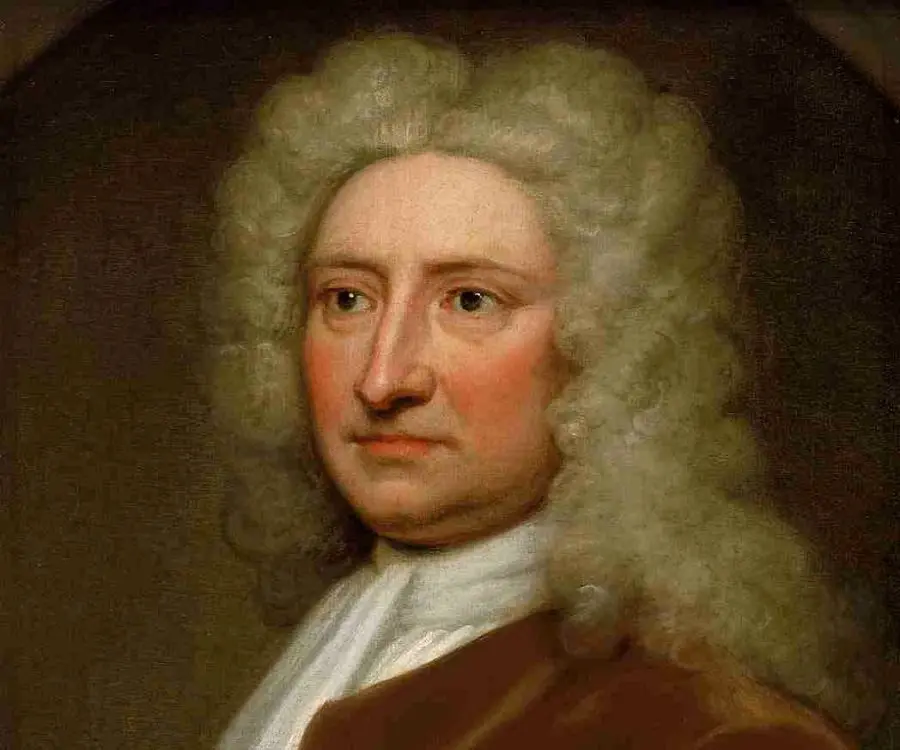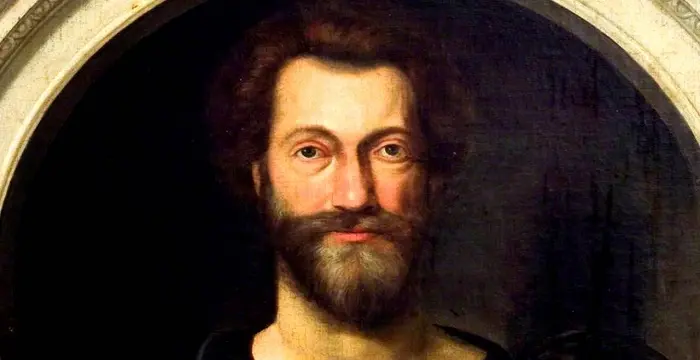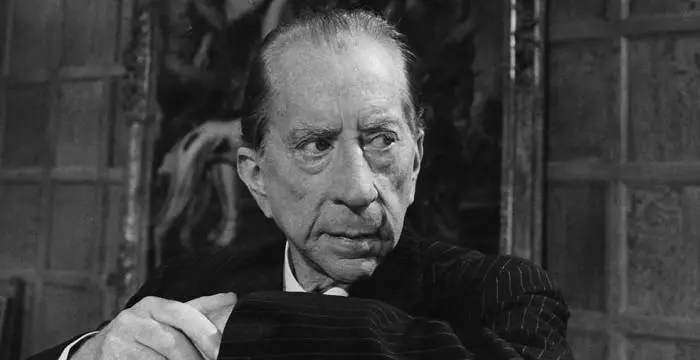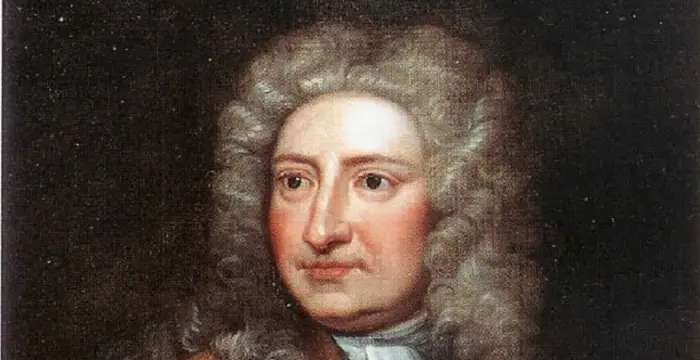
Edmond Halley - Mathematicians, Timeline and Childhood
Edmond Halley's Personal Details
Edmond Halley was a British astronomer and mathematician, known for calculating the orbit of Halley’s Comet
| Information | Detail |
|---|---|
| Birthday | November 8, 1656 |
| Died on | January 14, 1742 |
| Nationality | British |
| Famous | Oxford University, Scientists, Mathematicians, Astronomers |
| Spouses | Mary Tooke |
| Universities |
|
| Notable Alumnis |
|
| Discoveries / Inventions |
|
| Birth Place | Haggerston, Shoreditch, London, England |
| Gender | Male |
| Father | Edmond Halley Sr., |
| Sun Sign | Scorpio |
| Born in | Haggerston, Shoreditch, London, England |
| Famous as | Astronomer |
| Died at Age | 85 |
// Famous Astronomers
Jabir Ibn Hayyan
Jabir Ibn Hayyan was a medieval era polymath. Check out this biography to know about his life, works and achievements.
Isaac Newton
Isaac Newton was an English scientist and mathematician, who discovered gravitation and Newtonian Mechanics. Read this biography to find more on his life.
Henrietta Swan Leavitt
Henrietta Swan Leavitt was an American astronomer. Check out this biography to know about her childhood, family, personal life, discoveries, achievements, etc.
Edmond Halley's photo
Who is Edmond Halley?
Edmond Halley was a British astronomer and mathematician, known for calculating the orbit of Halley’s Comet. Born the middle of the seventeenth century to a wealthy soap-maker in London, he was educated first at St. Paul’s School, where he developed his initial interest in astronomy. Later while studying at Queens College, Oxford, he met John Flamsteed and inspired by his effort to catalogue northern stars, he left for St Helena to make a list of the southern stars. When he returned to London he had a catalogue of 341 stars, which he published as ‘Catalogus Stellarum Australium’. It instantly established him as a leading astronomer, earning him a fellowship at the Royal Society and a M.A. degree from Oxford. Later, he made many important astronomical discoveries, subsequently becoming the second Astronomer Royal in Britain. However, his interest was not limited only to astronomy or mathematics; he also showed considerable interest in archeology, medical abnormalities, general biology, geology, geography, physics, and engineering; making significant contributions in these fields.
// Famous Mathematicians
Grigori Perelman
Grigori Perelman is a Russian mathematician who is best known for his contributions to Riemannian geometry and geometric topology. Check out this biography to know about his childhood, family life, achievements and fun facts about him.
Terence Tao
Terence Tao is an Australian- American mathematician who has contributed enormously to the field of mathematics. Check out this biography to know about his childhood, family life and achievements.
Isaac Newton
Isaac Newton was an English scientist and mathematician, who discovered gravitation and Newtonian Mechanics. Read this biography to find more on his life.
Childhood & Early Years
Edmond Halley was born on 8 November 1656 in Haggerston, East London. His father, Edmond Halley Sr. was a wealthy soap-maker, possessing considerable amount of property in the city. He was also a member of the Salters’ Company and a freeman of the City.
Halley Sr. married Edmond’s mother, whose name remains unknown, two months before Edmond Halley’s birth. Subsequently, he had two more children with her; a daughter named Katherine and another son named Humphrey. Edmond’s mother died in 1672, when Edmund was 15 years old.
Starting his education under private tutors at home, Edmond entered St. Paul’s School in 1671. Here, he excelled both in mathematics and classics. It was also here that he first developed his interest in astronomy. His father encouraged him in this by buying him many fine astronomical instruments.
In 1673, Edmond Halley entered Queens College, Oxford. By this time, he had become keenly interested in astronomy, acquiring certain expertise in the subject. He also possessed a large number of finest astronomical instruments. As he moved to Oxford, he took them with him.
Around 1675, Halley was introduced to John Flamsteed, who at that time was working at Royal Greenwich Observatory, compiling a catalogue of northern stars. Halley met him twice at Greenwich, working for him for a short period. It inspired him to compile a list of southern stars.
While studying at Oxford, he published number of papers on the Solar System and sunspots. One of them, written on the occultation of Mars by the Moon on 11 June 1676, was published in the Philosophical Transaction of the Royal Society, London. However, he never completed his studies here.
Visit to St. Helena
In November 1676, Edmond Halley left Oxford without acquiring a degree and set sail for the island of St. Helena. While the project was financed by his father, he had the blessings of King Charles II. Many established scientist like Brouncker and Jonas Moore also supported him in this.
At Saint Helena, he set up an observatory with a large sextant with telescopic sights. Although bad weather hampered his work but Edmond Halley was largely successful in his mission. Apart from making numerous pendulum observations and discovering a star cluster in Centaurus, he was able to record the exact position of 341 stars.
Observing the transit of Mercury across the solar disk on 7 November,1677 was another of his major achievements. It led him to realize that by observing a similar transit of Venus across the sun and using Kepler's third law, one could determine the size of the Solar System.
Return to England
On returning to England in May 1678, Halley published the results of his works as ‘Catalogus Stellarum Australium’. Although he was still an undergraduate and barely twenty-two years old his reputation as an astronomer was instantly established and honors began to pour in.
On 30 November 1678, he was elected a fellow at the Royal Society, making him the youngest ever fellow of the Society. Next on 3 December 1678, on the intervention of the King Charles II, he received his M.A degree from the University of Oxford without taking the degree examination.
In 1679, he was sent to Danzig (Gdańsk) by the Royal Society to resolve a dispute between two senior astronomers, Johannes Hevelius and Robert Hooke. Hooke disputed Havelius’ observations as he made them without using telescopes. After working on them for two months Halley pronounced Havelius’ observations to be true.
Initially, Halley did not seek a teaching post, preferring to be on his own. In 1680, he went on a European tour with Robert Nelson, a school friend. While staying near Calais, he observed a comet. Later he moved to Paris and there, working with Cassini, he tried to determine its orbit.
From France, he moved to Italy, where he stayed for much of 1681. On his return, he started working on Kepler's third law. However, he would take some time before he came to any certain conclusion.
In 1682, his father got married for the second time, resulting in decreasing financial support from him. By then, he must have developed financial resources of own, for he not only got married and ran his own family, but also simultaneously concentrated on his scientific works.
Working on Kepler’s third law, he soon came to the conclusion that it implied the inverse square law of attraction. On 24 January 1684, he presented the results at a meeting of the Royal Society.
He next started working with Christopher Wren and Robert Hooke to find out if the inverse square law of attraction could be shown to imply elliptical orbits for the planets. But before they could come to any conclusion, Halley was involved in a personal tragedy.
In April 1684, Halley’s father was found dead after being gone missing for five weeks. Halley now became involved in financial as well legal matters pertaining to his father’s estate. But by August 1684, he was back to his work trying to solve the problem.
With Newton
In August 1684, Halley went to Cambridge to meet Isaac Newton. He, like Halley, Wren and Hooke, was then trying to find out which force kept the planets going in an orbital motion around the sun. Among them, Newton was first to solve the problem.
He told Halley that the orbit would be an ellipse; but he could not prove it because he had misplaced the calculation. With Halley’s encouragement, he once again started working on it, slowly expanding his scope, resulting in his magnum opus, ‘Philosophiae Naturalis Principia Mathematica’.
In 1685, Edmon Halley was appointed editor of Philosophical Transactions, published by the Royal Society, holding the position until 1693. He now took Newton’s work to be published by the Royal Society; but it did not have the required financial capacity to do so. Instead they entrusted Halley with the work.
Taking it up whole heartedly, Halley not only edited the work and corrected the proofs, but also wrote laudatory verse, praising the author. Finally in 1687, he had it printed, using his own money, later recouping his investment from the sales. Concurrently, he also continued to publish his own work.
In 1686, he published the second part of the results from his observation in St. Helena in ‘Philosophical Transactions’. It included a world map, showing the prevailing winds over the oceans. It was the first meteorological chart ever published.
Investigations & Discoveries
In 1691, as the Savilian Chair of Astronomy at Oxford fell vacant, Edmond Halley applied for the position; but failed to get the job because of his religious views. Apart from many influential clergies, Flamsteed, who had earlier refused acknowledge Halley’s contribution, opposed his appointment.
Also in 1691, Halley built a diving bell, giving a demonstration in the River Thames. Also in the same year, he introduced a rudimentary working model of a magnetic compass and wrote a paper on Julius Caesar’s first landing in Britain, critically analyzing old accounts.
In 1693, he introduced the idea of ‘hollow earth’. He proposed that the earth consists of a hollow shell about 800 km thick, having two inner concentric shells and an innermost core, separated by atmospheric layers. He also claimed that each shell has its own magnetic poles.
In 1693, he had the mortality tables for the city of Breslau published in the Philosophical Transactions. It was a novel project, which for the first time attempted to relate age and mortality in a given population, later influencing the development of the actuarial tables in life insurance.
From 1695 Halley began to study of the orbits of comets. Although Newton believed that they had parabolic orbits Halley was of the opinion that some might also have elliptical orbits. The work led to his identification of the comet that would later be named after him.
In 1696, as Newton became Warden of the Royal Mint in London, he had Halley appointed as deputy controller of the mint at Chester, a position Halley held until its abolition in 1698. Thereafter, Halley was appointed the commander of the war sloop, Paramore Pink by William III.
From 1698 to 1700, Halley traveled around in Paramore Pink, making measurements of the compass declination in the South Atlantic and determining the latitudes and longitudes of each port he called during this voyage. It was one of the first sea voyages that were undertaken purely for scientific research.
In 1701, he published the result of his investigation in ‘General Chart of the Variation of the Compass’. It was the first magnetic charts of the Atlantic Ocean and some parts of the Pacific Ocean, compiled not only from his own observation, but also from other available resources.
In 1704, Halley was appointed Savilian professor of geometry at Oxford. This time also, Flamsteed objected to the appointment; but by then Halley was too famous for the objection to be effective.
In 1705, Halley published the result of his study on the orbit of the comets as ‘A Synopsis of the Astronomy of Comets’. In this book, he identified 24 comets with parabolic orbits, observed from 1337 to 1698.
In 1706, he learned Arabic and completed translation of several books from Latin, works that had been started by other writers like Edward Bernard and David Gregory. He published them in 1710, along with his own reconstruction of Book VIII.
In 1716, he devised a method for observing the transit of Venus across the solar disc. Four years later in 1720, he replaced Flamsteed as the Astronomer Royal. In the same year, he and William Stukeley attempted to date Stonehenge scientifically. However, they erred by few thousand years.
Major Works
Halley is best remembered for his discovery of, what is now called, ‘Halley’s Comet’. After much deliberation, he concluded that the comet of 1682 had earlier appeared in 1531 and 1607 and then going further back, he declared that the same comet had also appeared in 1305, 1380, and 1456.
In his 1705 book, ‘A Synopsis of the Astronomy of Comets’, he predicted that the particular comet would reappear in December 1758. However, he did not live to see his prediction come true. The comet did reappear on 25 December 1758, but by then he was no more.
Personal Life & Legacy
In 1682, Edmond Halley married Mary Tooke, daughter of an auditor of the Exchequer. They had three children; a son, also named Edmond Halley and two daughters. named Margaret and Richelle. They lived in Islington, now a district under Greater London.
Halley died on 25 January 1742, at the age of 85. He was survived by his two daughters. His son Edmond, then a naval surgeon, died a year ago while his wife predeceased him by five years.
Halley was buried at the old church of St Margaret's, Lee. While his marked grave remains in its original place, the tombstone was removed to Camera Obscura at the Royal Observatory, Greenwich when the original church was demolished.
Apart from the Halley’s Comet, officially designated as 1P/Halley, he has two craters, one on the moon and the other on the planet Mars, named after him.
In mathematics, a root-finding algorithm has been named Halley’s method.
Apart from numerous roads, schools, eateries all over the world, he also has a scientific research station run by British Antarctic Survey on the Brunt Ice Shelf, Antarctica, named after him.
// Famous Scientists
Juliane Koepcke
Juliane Koepcke is a German-Peruvian biologist, who was the lone survivor among the 92 passengers and crew of the ill-fated LANSA Flight 508 that crashed in the Peruvian rainforest on 24 December 1971. Know more about her life in this biography.
Henry Cavendish
Henry Cavendish was a theoretical chemist and physicist, renowned for discovery of hydrogen and calculation of the mass of earth. To know more about his childhood, profile, timeline and career read on
Konstantin Tsiolkovsky
Konstantin Tsiolkovsky was a Russian rocket scientist and a pioneer of astronautics. This biography provides detailed information about his childhood, family, personal life, career, achievements, etc.
Edmond Halley biography timelines
- // 8th Nov 1656Edmond Halley was born on 8 November 1656 in Haggerston, East London. His father, Edmond Halley Sr. was a wealthy soap-maker, possessing considerable amount of property in the city. He was also a member of the Salters’ Company and a freeman of the City.
- // 1671Starting his education under private tutors at home, Edmond entered St. Paul’s School in 1671. Here, he excelled both in mathematics and classics. It was also here that he first developed his interest in astronomy. His father encouraged him in this by buying him many fine astronomical instruments.
- // 1672Halley Sr. married Edmond’s mother, whose name remains unknown, two months before Edmond Halley’s birth. Subsequently, he had two more children with her; a daughter named Katherine and another son named Humphrey. Edmond’s mother died in 1672, when Edmund was 15 years old.
- // 1673In 1673, Edmond Halley entered Queens College, Oxford. By this time, he had become keenly interested in astronomy, acquiring certain expertise in the subject. He also possessed a large number of finest astronomical instruments. As he moved to Oxford, he took them with him.
- // 1675Around 1675, Halley was introduced to John Flamsteed, who at that time was working at Royal Greenwich Observatory, compiling a catalogue of northern stars. Halley met him twice at Greenwich, working for him for a short period. It inspired him to compile a list of southern stars.
- // 1676While studying at Oxford, he published number of papers on the Solar System and sunspots. One of them, written on the occultation of Mars by the Moon on 11 June 1676, was published in the Philosophical Transaction of the Royal Society, London. However, he never completed his studies here.
- // 1676In November 1676, Edmond Halley left Oxford without acquiring a degree and set sail for the island of St. Helena. While the project was financed by his father, he had the blessings of King Charles II. Many established scientist like Brouncker and Jonas Moore also supported him in this.
- // 1677Observing the transit of Mercury across the solar disk on 7 November,1677 was another of his major achievements. It led him to realize that by observing a similar transit of Venus across the sun and using Kepler's third law, one could determine the size of the Solar System.
- // 1678On 30 November 1678, he was elected a fellow at the Royal Society, making him the youngest ever fellow of the Society. Next on 3 December 1678, on the intervention of the King Charles II, he received his M.A degree from the University of Oxford without taking the degree examination.
- // May 1678On returning to England in May 1678, Halley published the results of his works as ‘Catalogus Stellarum Australium’. Although he was still an undergraduate and barely twenty-two years old his reputation as an astronomer was instantly established and honors began to pour in.
- // 1679In 1679, he was sent to Danzig (Gdańsk) by the Royal Society to resolve a dispute between two senior astronomers, Johannes Hevelius and Robert Hooke. Hooke disputed Havelius’ observations as he made them without using telescopes. After working on them for two months Halley pronounced Havelius’ observations to be true.
- // 1680Initially, Halley did not seek a teaching post, preferring to be on his own. In 1680, he went on a European tour with Robert Nelson, a school friend. While staying near Calais, he observed a comet. Later he moved to Paris and there, working with Cassini, he tried to determine its orbit.
- // 1681From France, he moved to Italy, where he stayed for much of 1681. On his return, he started working on Kepler's third law. However, he would take some time before he came to any certain conclusion.
- // 1682In 1682, his father got married for the second time, resulting in decreasing financial support from him. By then, he must have developed financial resources of own, for he not only got married and ran his own family, but also simultaneously concentrated on his scientific works.
- // 1682Halley is best remembered for his discovery of, what is now called, ‘Halley’s Comet’. After much deliberation, he concluded that the comet of 1682 had earlier appeared in 1531 and 1607 and then going further back, he declared that the same comet had also appeared in 1305, 1380, and 1456.
- // 1682In 1682, Edmond Halley married Mary Tooke, daughter of an auditor of the Exchequer. They had three children; a son, also named Edmond Halley and two daughters. named Margaret and Richelle. They lived in Islington, now a district under Greater London.
- // 1684In August 1684, Halley went to Cambridge to meet Isaac Newton. He, like Halley, Wren and Hooke, was then trying to find out which force kept the planets going in an orbital motion around the sun. Among them, Newton was first to solve the problem.
- // 24th Jan 1684Working on Kepler’s third law, he soon came to the conclusion that it implied the inverse square law of attraction. On 24 January 1684, he presented the results at a meeting of the Royal Society.
- // Apr 1684In April 1684, Halley’s father was found dead after being gone missing for five weeks. Halley now became involved in financial as well legal matters pertaining to his father’s estate. But by August 1684, he was back to his work trying to solve the problem.
- // 1685In 1685, Edmon Halley was appointed editor of Philosophical Transactions, published by the Royal Society, holding the position until 1693. He now took Newton’s work to be published by the Royal Society; but it did not have the required financial capacity to do so. Instead they entrusted Halley with the work.
- // 1686In 1686, he published the second part of the results from his observation in St. Helena in ‘Philosophical Transactions’. It included a world map, showing the prevailing winds over the oceans. It was the first meteorological chart ever published.
- // 1687Taking it up whole heartedly, Halley not only edited the work and corrected the proofs, but also wrote laudatory verse, praising the author. Finally in 1687, he had it printed, using his own money, later recouping his investment from the sales. Concurrently, he also continued to publish his own work.
- // 1691In 1691, as the Savilian Chair of Astronomy at Oxford fell vacant, Edmond Halley applied for the position; but failed to get the job because of his religious views. Apart from many influential clergies, Flamsteed, who had earlier refused acknowledge Halley’s contribution, opposed his appointment.
- // 1691Also in 1691, Halley built a diving bell, giving a demonstration in the River Thames. Also in the same year, he introduced a rudimentary working model of a magnetic compass and wrote a paper on Julius Caesar’s first landing in Britain, critically analyzing old accounts.
- // 1693In 1693, he introduced the idea of ‘hollow earth’. He proposed that the earth consists of a hollow shell about 800 km thick, having two inner concentric shells and an innermost core, separated by atmospheric layers. He also claimed that each shell has its own magnetic poles.
- // 1693In 1693, he had the mortality tables for the city of Breslau published in the Philosophical Transactions. It was a novel project, which for the first time attempted to relate age and mortality in a given population, later influencing the development of the actuarial tables in life insurance.
- // 1695From 1695 Halley began to study of the orbits of comets. Although Newton believed that they had parabolic orbits Halley was of the opinion that some might also have elliptical orbits. The work led to his identification of the comet that would later be named after him.
- // 1696In 1696, as Newton became Warden of the Royal Mint in London, he had Halley appointed as deputy controller of the mint at Chester, a position Halley held until its abolition in 1698. Thereafter, Halley was appointed the commander of the war sloop, Paramore Pink by William III.
- // 1698From 1698 to 1700, Halley traveled around in Paramore Pink, making measurements of the compass declination in the South Atlantic and determining the latitudes and longitudes of each port he called during this voyage. It was one of the first sea voyages that were undertaken purely for scientific research.
- // 1701In 1701, he published the result of his investigation in ‘General Chart of the Variation of the Compass’. It was the first magnetic charts of the Atlantic Ocean and some parts of the Pacific Ocean, compiled not only from his own observation, but also from other available resources.
- // 1704In 1704, Halley was appointed Savilian professor of geometry at Oxford. This time also, Flamsteed objected to the appointment; but by then Halley was too famous for the objection to be effective.
- // 1705In 1705, Halley published the result of his study on the orbit of the comets as ‘A Synopsis of the Astronomy of Comets’. In this book, he identified 24 comets with parabolic orbits, observed from 1337 to 1698.
- // 1705In his 1705 book, ‘A Synopsis of the Astronomy of Comets’, he predicted that the particular comet would reappear in December 1758. However, he did not live to see his prediction come true. The comet did reappear on 25 December 1758, but by then he was no more.
- // 1706In 1706, he learned Arabic and completed translation of several books from Latin, works that had been started by other writers like Edward Bernard and David Gregory. He published them in 1710, along with his own reconstruction of Book VIII.
- // 1716In 1716, he devised a method for observing the transit of Venus across the solar disc. Four years later in 1720, he replaced Flamsteed as the Astronomer Royal. In the same year, he and William Stukeley attempted to date Stonehenge scientifically. However, they erred by few thousand years.
- // 25th Jan 1742Halley died on 25 January 1742, at the age of 85. He was survived by his two daughters. His son Edmond, then a naval surgeon, died a year ago while his wife predeceased him by five years.
// Famous Oxford University
Rupert Murdoch
Rupert Murdoch is a renowned Australian business magnate famous for his establishment, ‘News Corporation’ in the US. Read on for detailed information about his childhood, profile, career and timeline
John Donne
John Donne was a famous English poet, satirist, lawyer and priest of his time. Check out this biography to know about his childhood, family life, achievements and other facts related to his life.
Michael York
Michael York is a famous English actor who has enjoyed a busy and varied career in both, television and film. Explore this biography to learn more about his profile, childhood, life and timeline.
J. Paul Getty
J. Paul Getty was an American billionaire businessman and president of the Getty Oil Company. This biography offers detailed information about his childhood, life, career and timeline.
Emma Watson
Emma Watson is a British actress and model, best-known for her role as ‘Hermione Granger’ in the Harry Potter series. Explore this biography to learn more about her profile, childhood, life and timeline.
Rowan Douglas Williams
Rowan Douglas Williams is an Anglican bishop, poet and theologian. This article traces his childhood, life achievements, works & timeline.
Edmond Halley's FAQ
What is Edmond Halley birthday?
Edmond Halley was born at 1656-11-08
When was Edmond Halley died?
Edmond Halley was died at 1742-01-14
Where was Edmond Halley died?
Edmond Halley was died in Greenwich, London, England
Which age was Edmond Halley died?
Edmond Halley was died at age 85
Where is Edmond Halley's birth place?
Edmond Halley was born in Haggerston, Shoreditch, London, England
What is Edmond Halley nationalities?
Edmond Halley's nationalities is British
Who is Edmond Halley spouses?
Edmond Halley's spouses is Mary Tooke
What was Edmond Halley universities?
Edmond Halley studied at Oxford University, The Queen's College, Oxford, University of Oxford, St Paul's School, London
What was Edmond Halley notable alumnis?
Edmond Halley's notable alumnis is Oxford University
What is Edmond Halley's inventions/discoveries?
Halley's Comet was invented (or discovered) by Edmond Halley
Who is Edmond Halley's father?
Edmond Halley's father is Edmond Halley Sr.,
What is Edmond Halley's sun sign?
Edmond Halley is Scorpio
How famous is Edmond Halley?
Edmond Halley is famouse as Astronomer


